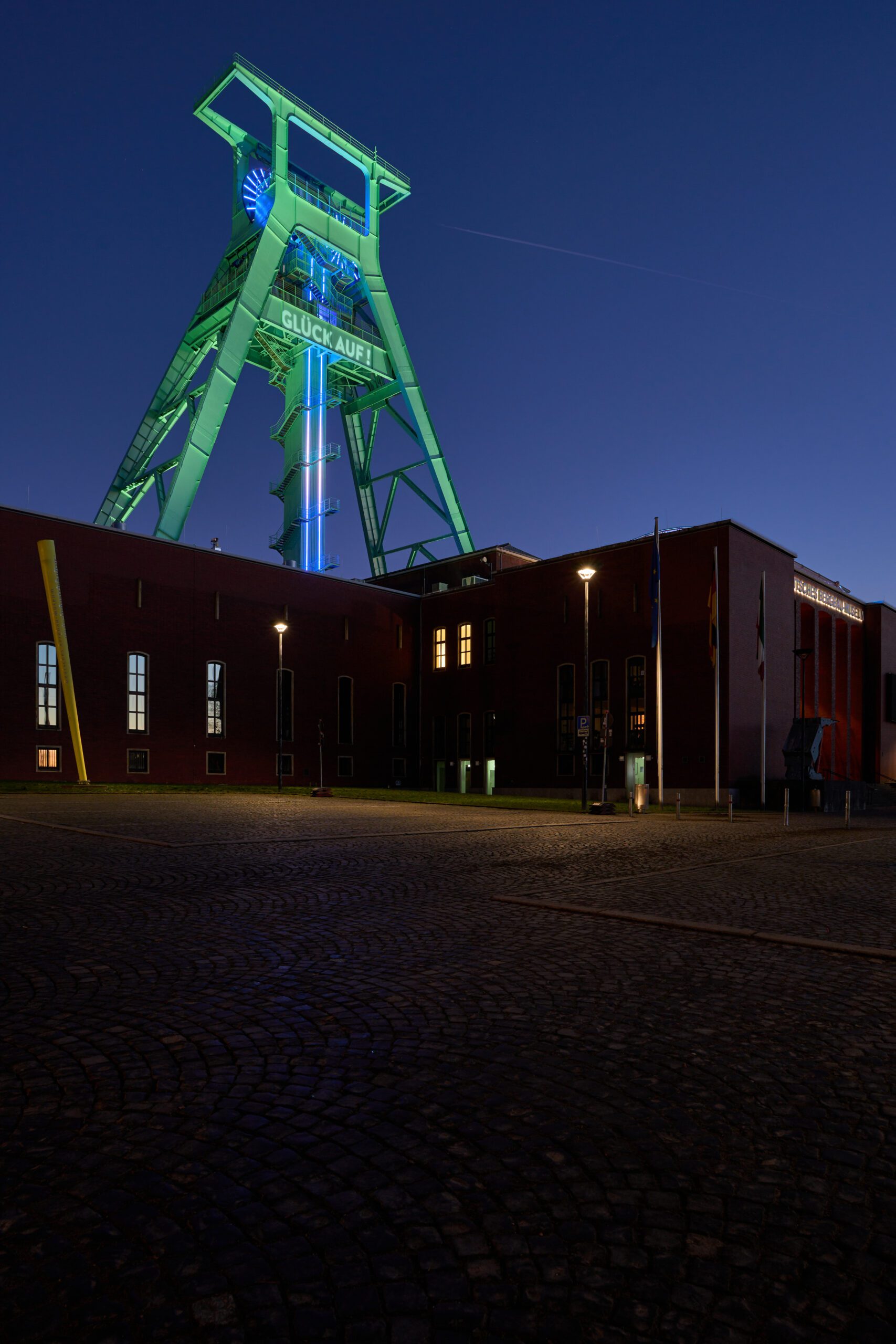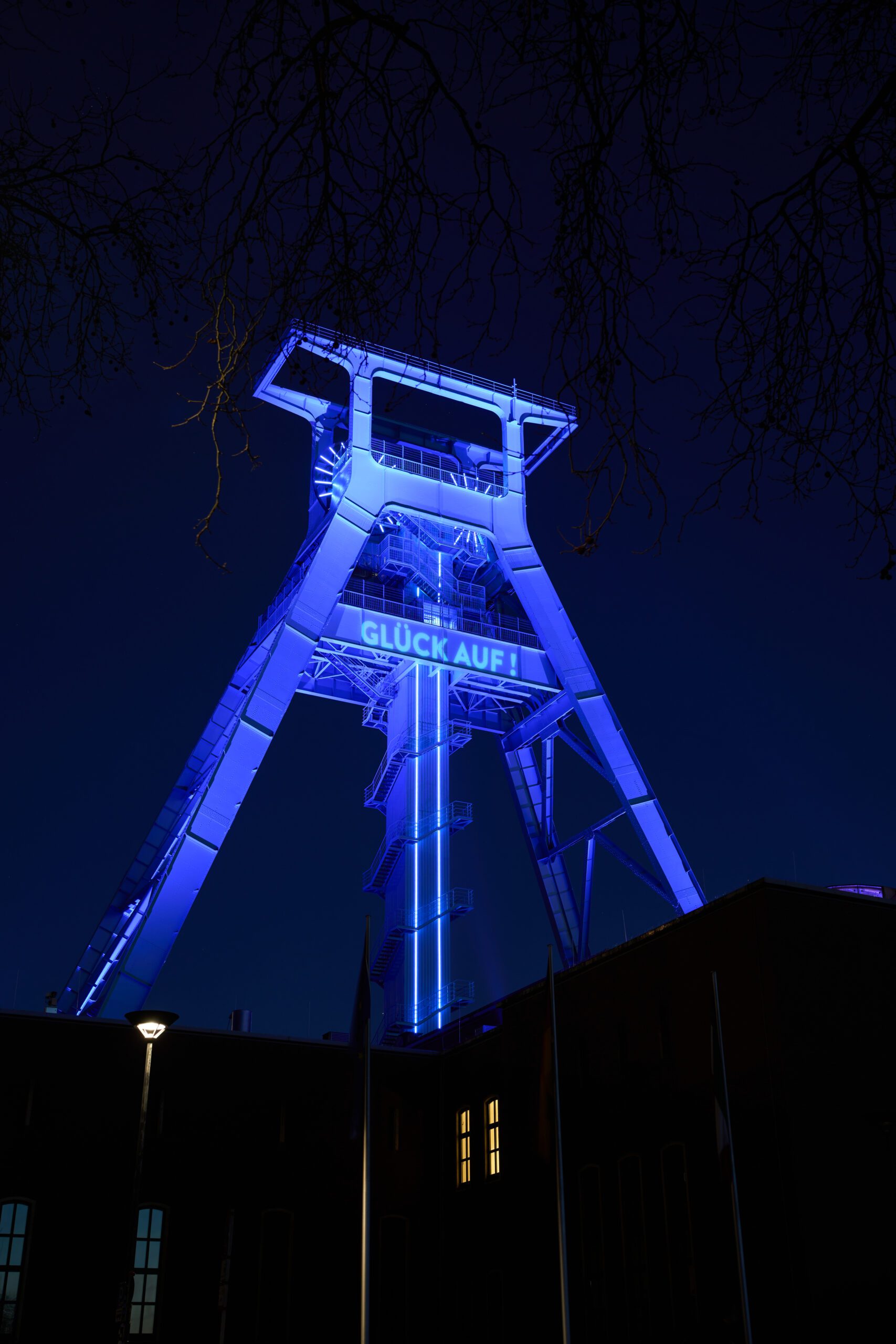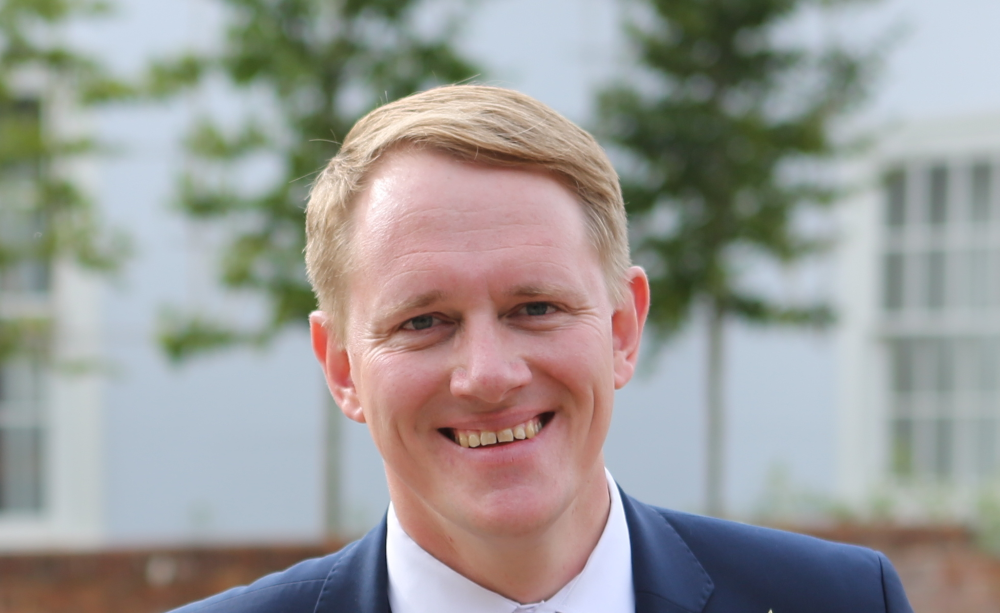Standing 71-metres high, the double trestle headframe at the German Mining Museum Bochum – Leibniz Research Museum for Geo-resources – has been renovated and given a new dynamic lighting design, achieved through the installation of a flexible multi-controller system from Pharos Architectural Controls.
The headframe is a celebrated local landmark of the popular museum. As the largest mining museum in the world, and operational as a research institute for mining, archaeology and archaeometry, the site needs frequent refurbishment to ensure it is functional, appealing, and maintaining high standards. Most recently, the headframe was renovated with the replacement of steel parts and the removal of old paint layers, with a new coating applied. The addition of dynamic lighting has allowed the structure to be transformed into an illuminated sculpture while improving energy efficiency.
Westermann Kommunikation and LightLife collaborated on the lighting design, with LightLife handling the programming and installation.
The once cold, static lighting has been replaced with a new system capable of transforming the museum and its surroundings with light shows featuring warm white and coloured arrays. This design introduces a sense of movement to the structure, animating the winding tower’s pulleys and enabling the projection of words onto one of its horizontal beams. The lighting will highlight events in the Ruhr area, from local celebrations to other significant dates, creating a visually engaging connection between the landmark and the community.

The words “Glück Auf!”, which translate to ‘Good luck!’, were beamed onto the tower for its grand opening in February 2025. This is a traditional German greeting, particularly among miners, that expresses a wish for good fortune in their work and a safe return. The phrase is also used more broadly as a general greeting or as a call for luck.
To realise this new lighting design, a single-universe Pharos Designer LPC (Lighting Playback Controller) was specified, delivering the control elements for the external lighting, the atrium, glass roof, elevator space and park lighting. The LPC is also being used to control the gobo projection component of the light show.
The Designer LPC is an all-in-one control solution, ideal for large-scale LED lighting installations. As a rugged, compact unit, the LPC is designed to offer complete reliability even when in 24/7 operation, and features individually controllable and independently running timelines and scenes. It also offers the freedom of real-time manual overrides, with the versatility of powerful show control and integration features.
To enable the video playback of the LED lines – the pulleys of the winding tower – a fifty-universe Pharos Designer VLC (Video Lighting Controller) has been specified. The VLC is a flexible solution that offers a simple way to play video content across an array. This can either be from locally stored HD media files or a DVI-D video input. The VLC also offers a range of creative, generative effects and the versatility of powerful show control and integration features.
Mark de Gruyter, Sales Director at Pharos Architectural Controls said: “The German Mining Museum Bochum is an incredibly popular tourist destination, as well as an important research facility. It is only fitting that its iconic landmark, the headframe, can be used to highlight not only the museum’s appeal, but also align with the town’s celebrations, special occasions and historic events.
“The LPC from Pharos Architectural Controls is a powerful and versatile product, offering lighting control to a broad range of areas and zones. Alongside the flexibility of the VLC, the system is providing everything needed to ensure the headframe is a nightly spectacle that can be enjoyed by all.”

Florian Tolksdorf, Interior Architect and Project Manager for LightLife, added: “The project as an interplay of architecture, culture, monument and environment in planning, construction and programming was a great challenge for us. It’s rare to have the opportunity to illuminate such an extraordinary building. Many former miners, local residents, and visitors now take joy in witnessing this monument, revitalised by light, as it brings back a piece of their history. For me, as a lighting designer, this sense of joy is the most rewarding part.
We also succeeded in using only high-quality components from European manufacturers, including Pharos from England, Griven from Italy, and SchnickSchnackSystems from Germany. This approach is not always typical in the lighting industry, but for us, it represents the right and sustainable path forward.”
The renovated headframe was unveiled as part of a special festival held at the museum at the end of February. Its nightly illuminations are now a firm favourite among residents and visitors to the attraction, and will no doubt play an important role in the cultural representation of the town of Bochum and the wider Ruhr area.
Project Credits:
Lighting design: Westermann Kommunikation & LightLife
Installation & programming: LightLife
Lighting Controls: Pharos Architectural Controls
Photography credit: F. Tolksdorf LightLife






